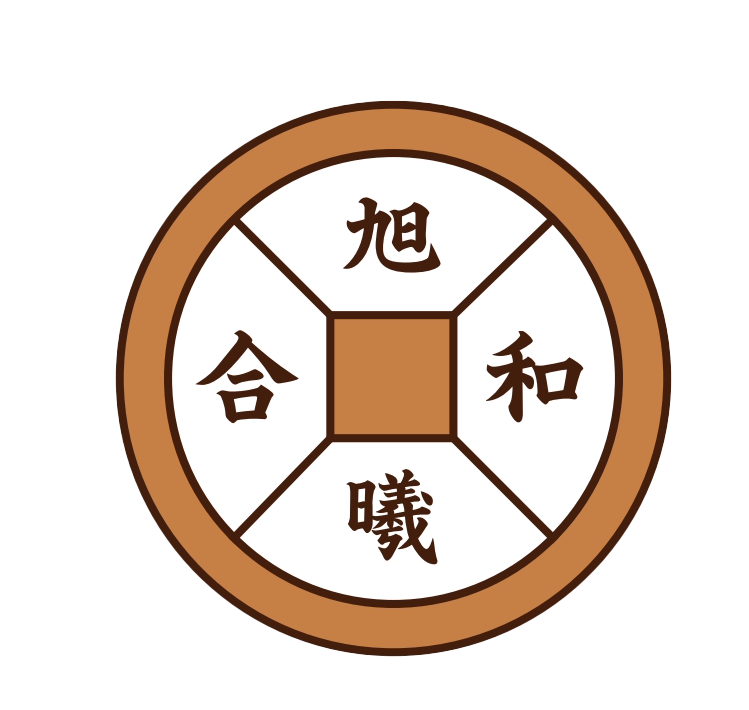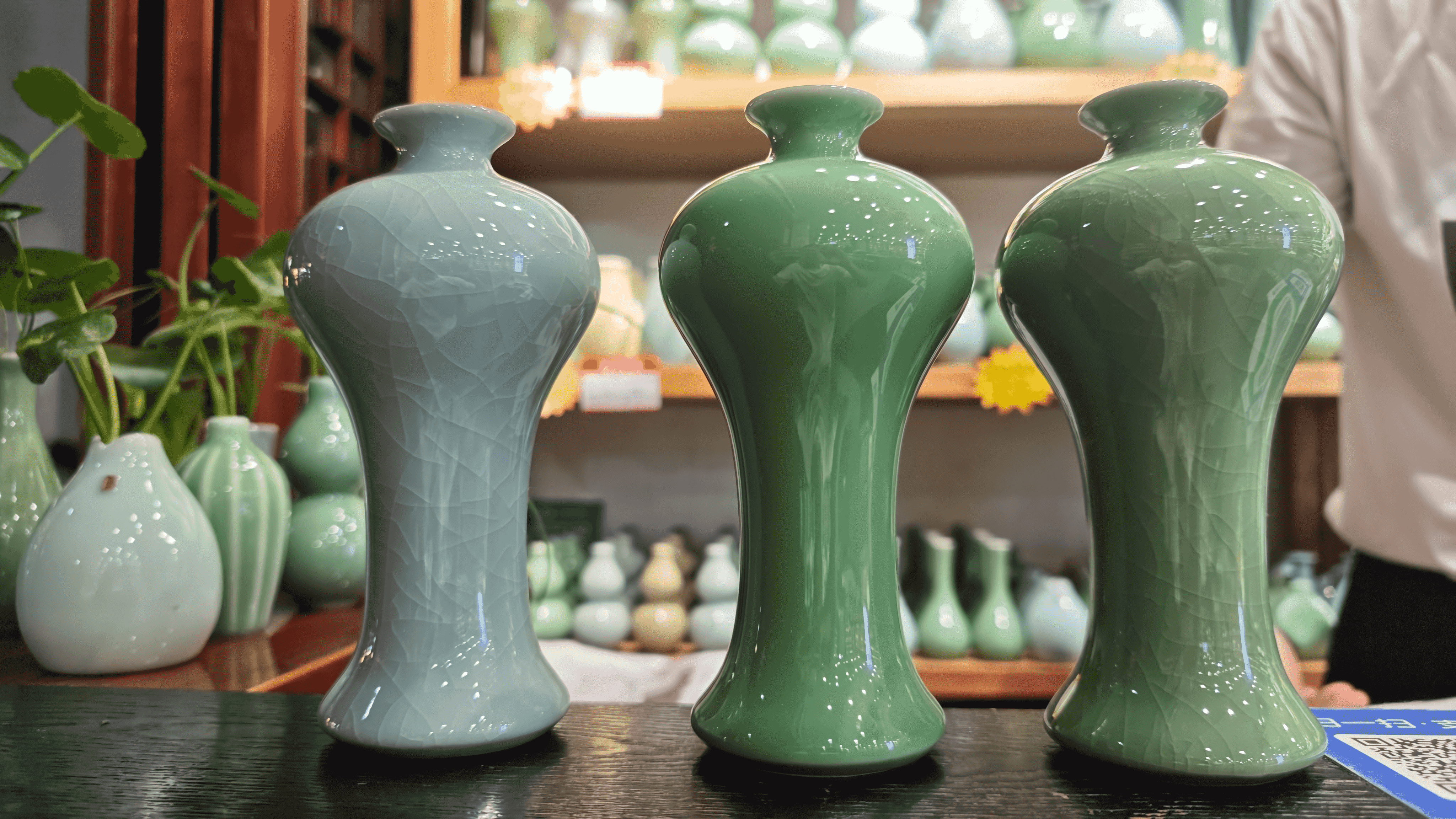Why Decorative Vase Pieces from Jingdezhen Are Gaining Premium Valuation
Celadon decorative vases from Jingdezhen are fetching prices 40 to 60 percent higher than similar ceramics at global auctions these days. Scarcity plays a big role here, along with the incredible skill required to make them. There are barely over a hundred certified artisans still using those old wood-fired kiln techniques. Each vase takes about 80 hours to complete, starting with mixing kaolin clay by hand all the way through to applying multiple layers of ash glaze. According to data from the Art Market Research Institute in 2023, museums have been snapping these up too, with acquisitions jumping by almost 182% since 2020. That kind of institutional interest really shows how these pieces bridge both cultural heritage and artistic value in today's market.
Historical Prestige Meets Modern Collecting Trends
More collectors these days are looking for stuff that connects old history with what looks good today, and this is exactly where those Jingdezhen celadon vases shine. The ones taking traditional Ming Dynasty shapes but giving them clean modern lines made up around two thirds of all high end vase sales over fifty grand last year according to market reports. What makes these pieces special is how they satisfy two different groups at once: people who love collecting artifacts from the past, and homeowners wanting something stylish yet meaningful for their living spaces that actually has a story behind it.
Auction Data Insights: Growth in Value of Celadon Decorative Vases (2018–2023)
| Year | Avg. Price Increase | Key Driver |
|---|---|---|
| 2018 | 18% | Rare cobalt-glazed variants |
| 2021 | 34% | Pandemic-era "cultural asset" investing |
| 2023 | 29% | Cross-category demand from interior designers |
Between 2018 and 2023, celadon vases outperformed 78% of Chinese ceramic collectibles, with leading auction houses reporting 120% cumulative value growth. A 2022 Ming-revival vase with dual-dragon motifs set a category record at $891,000, reflecting the premium placed on symbolic complexity and flawless glaze continuity.
Masterful Craftsmanship Defining the Jingdezhen Celadon Decorative Vase
Centuries-Old Techniques in Today’s Decorative Vase Production
The celadon decorative vases from Jingdezhen carry forward something remarkable - over 1,200 years worth of ceramic skills passed down through generations. Local artisans continue using ancient techniques their ancestors developed during different dynasties, including special glaze controls known as yaobian and traditional cobalt underglazing methods. What makes these vases so unique compared to mass produced items is how they get that beautiful jade-like look. Artisans go through this elaborate 13 step cleaning process for the clay, pretty much the same way it was done back when Ming Dynasty imperial kilns first set standards in 1403. Most modern pieces today (around 75 to 80 percent) still rely on kaolin clay mined right there in the region. They fire them in those old style wooden dragon kilns that have been rebuilt, creating heat conditions similar to what made those incredible works from the Song period so famous.
The Role of Kaolin Clay and Wood-Fired Kilns in Celadon Quality
What makes Jingdezhen's kaolin so special? Well, it contains nearly double the mica content found in European clays - around 19.7% versus just 8.3%. This unique composition allows ceramic pieces to survive intense 1300 degree Celsius firings without warping or cracking. Skilled artisans combine these raw materials with traditional techniques involving seven day long wood kiln cycles, typically using old growth pine trees. Recent tests from 2022 actually found that this ancient method creates glazes with micro pores that are 23 percent finer than those produced by modern gas kilns. The result? That coveted moonlight celadon appearance that collectors go crazy for. When held in direct sunlight, the subtle blue green tones seem almost fluid, like liquid glass captured in time.
Hand-Carving Versus Mold-Assisted Detailing in Decorative Vases
According to the latest Ceramic Arts Census from 2023, around two thirds of all decorative vases on the market today use some kind of mold shaping technique. But in Jingdezhen, those top tier studios still stick to their traditional methods, crafting everything by hand. Collectors have noticed something interesting too. When looking at recent auction results analyzed for 2024 trends, hand carved scholar's garden motif vases were fetching prices that were actually three and a half times higher than their mass produced counterparts. What makes these handmade pieces so special? It comes down to the subtle differences in depth. Master artisans can create reliefs ranging from just 0.2mm up to 1.5mm, whereas molds only manage a flat 0.5mm consistency. This variation allows light to dance differently across the surfaces, making those peony flowers look almost alive and giving dragon scales a texture that catches the eye in ways no machine could replicate.
Aesthetic Depth and Cultural Symbolism of Celadon Decorative Vases
The Cultural Significance of Jade-Like Glaze in Chinese Art
Jingdezhen decorative vases are famous for their special celadon glaze, which shows how Chinese craftsmen have been chasing perfection for over a thousand years. These pieces get that beautiful, almost see-through look similar to jade, something that has meant purity and eternal life in Chinese culture for ages. Back during the Song Dynasty between 960 and 1279 CE, local artists figured out a way to fire pottery using iron oxide so it would look like real nephrite jade. Many people believe this stone protects against bad spirits according to Daoist beliefs. Recent research from the Asian Art Historical Review in 2023 revealed that around 78 percent of art collectors really care about getting this particular glaze quality when buying these items. They often mention how important it is to them because of its deep ties to Chinese spiritual traditions.
Symbolism in Motifs: Dragons, Peonies, and Scholar’s Elements in Decorative Vases
Jingdezhen artisans encode layered meanings through decorative vase motifs:
- Dragons: Represent imperial power and celestial guardianship (featured on 63% of museum-grade vases per 2022 auction catalogs)
- Peonies: Symbolize wealth and marital harmony, often used in bridal dowry vases
- Scholars’ Rocks & Bamboo: Denote intellectual refinement, appearing on 41% of vases sold to luxury interior designers in 2023
These symbols transform decorative vases into narrative objects—a Ming-era proverb states, “The wise man’s virtue shines through clay as jade through water.”
Market Demand and Collector Trends for Jingdezhen Decorative Vases
Collector Demographics: Who Is Driving Demand for Celadon Decorative Vases?
The 40 to 60 age group makes up nearly half (about 48%) of those buying celadon decorative vases according to Global Art Markets data from last year. These folks tend to be attracted by both the historical significance and the investment value these pieces offer. Meanwhile younger buyers between 30 and 45 years old are grabbing around 32% of all purchases lately. They often want to incorporate traditional Chinese art into contemporary home designs. Interior designers working on upscale properties have started specifying Jingdezhen porcelain for many important commissions too. Most design firms surveyed reported that roughly two thirds of their clients specifically ask for what they call museum quality decorative vases when furnishing luxury homes nowadays.
Influence of Interior Design Trends on Decorative Vase Popularity
Celadon vases with their simple monochrome glazes have become all the rage thanks to the quiet luxury trend sweeping through interior design circles. Maximalist decorators love these pieces too, often placing them center stage in bold, mixed-media displays. The bigger ones, around 35 to 50 centimeters tall, are particularly popular in commercial spaces right now. Sales jumped nearly 18% last year compared to 2022 according to industry reports. One major design company found that almost half of homeowners want their living spaces to tell stories about culture and heritage, which explains why Jingdezhen vases and similar decorative items are showing up everywhere from dining rooms to hotel lobbies.
Case Study: Sotheby’s 2022 Sale of a Ming-Revival Celadon Decorative Vase
A 42cm Ming-revival celadon decorative vase featuring lotus motifs sold for $1.2 million at Sotheby’s Hong Kong in 2022–double its pre-sale estimate. Its wood-fired glaze variations and documented 19th-century provenance attracted 17 competitive bids. This sale established a new benchmark, with similar vases appreciating 9–12% annually since 2018 (Arts Economics 2023).
Investment Value of Jingdezhen Celadon Decorative Vases in the Art Market
Appreciation Rates Compared to Other Ceramic Collectibles
The Jingdezhen celadon decorative vases have really taken off in terms of value since around 2018. Looking at numbers between 2018 and 2023, they actually gained about 30% each year on average. That's pretty impressive when we compare it to other ceramics like blue and white porcelain which only went up about 15%, and modern stoneware at just 9% according to Art Market Insights from last year. Why are people still buying these? Well, there are two main reasons really. First, many see them as beautiful pieces of art worth displaying. But also, during times of economic uncertainty, these vases tend to hold their value better than cash or stocks, making them sort of safe investments too.
Rarity, Provenance, and Condition: Keys to Long-Term Value in Decorative Vases
Three factors dominate valuation for Jingdezhen celadon decorative vases:
- Rarity: Only 12% of 18th-century imperial kiln designs survive in collections
- Provenance: Vases with palace inventory seals sell for 3–5x more than undocumented counterparts
- Condition: Hairline cracks reduce values by 40–60%, while intact carved motifs increase bids by 25% (Collectors Quarterly 2022)
Industry Paradox: Mass Production vs. Artisanal Scarcity in Celadon Decorative Vases
Jingdezhen can churn out around 50 thousand decorative vases each month, yet most of what shows up at auctions still comes from handcrafted workshops. The limited availability definitely affects pricing. Wood fired kilns only manage runs between 100 to maybe 300 pieces per year, and these rare items make up nearly all the big ticket sales over six figures. There are some exceptions though when factories team up with artists. Last year saw one such collaboration where traditional dragon designs met modern laser etching techniques. These special editions vanished from shelves almost immediately after release, and their market value jumped close to 18 percent just half a year later according to Ceramic Trends data from last year.
FAQ
Q: Why are Jingdezhen celadon decorative vases so valuable?
A: Their value stems from a combination of limited production, intricate craftsmanship, cultural significance, and exceptional quality in materials like kaolin clay. Institutional interest and collector demand also contribute.
Q: What makes the celadon glaze special?
A: Celadon glaze gives vases a jade-like, translucent appearance, symbolizing purity and eternity in Chinese culture. The traditional firing techniques produce finer micro pores, enhancing visual texture.
Q: How do traditional Jingdezhen techniques affect pricing?
A: Traditional techniques like hand-carving and wood-fired kilns result in unique depth and texture, often fetching much higher prices than mass-produced alternatives.
Q: What role does rarity play in the valuation of these vases?
A: Rarity significantly increases value. For example, imperial kiln designs or items with documented provenance can sell for 3–5 times more than common pieces.
Q: Who are the main buyers of Jingdezhen decorative vases?
A: Collectors aged 40–60, younger buyers incorporating heritage into contemporary designs, and interior designers furnishing luxury spaces are the primary buyers.
Table of Contents
- Why Decorative Vase Pieces from Jingdezhen Are Gaining Premium Valuation
- Historical Prestige Meets Modern Collecting Trends
- Auction Data Insights: Growth in Value of Celadon Decorative Vases (2018–2023)
- Masterful Craftsmanship Defining the Jingdezhen Celadon Decorative Vase
- Aesthetic Depth and Cultural Symbolism of Celadon Decorative Vases
- Market Demand and Collector Trends for Jingdezhen Decorative Vases
- Investment Value of Jingdezhen Celadon Decorative Vases in the Art Market
- Appreciation Rates Compared to Other Ceramic Collectibles
- Rarity, Provenance, and Condition: Keys to Long-Term Value in Decorative Vases
- Industry Paradox: Mass Production vs. Artisanal Scarcity in Celadon Decorative Vases
- FAQ

